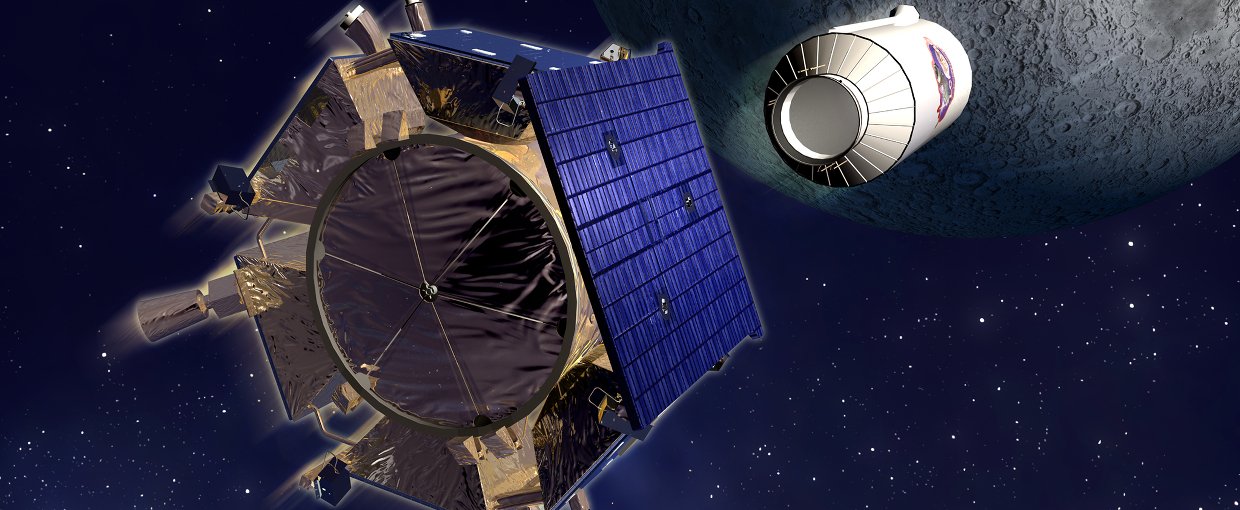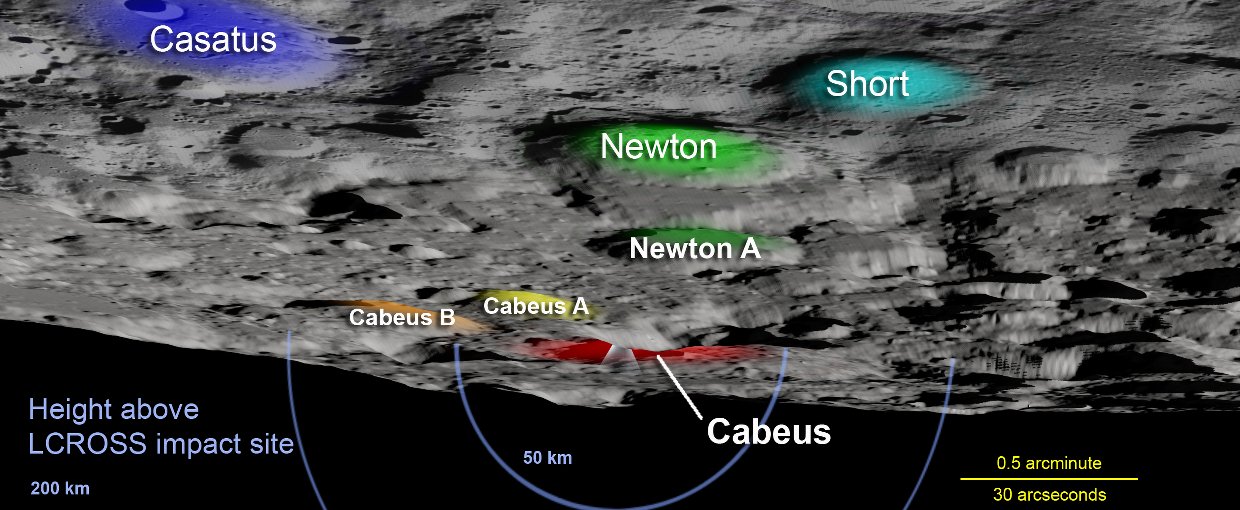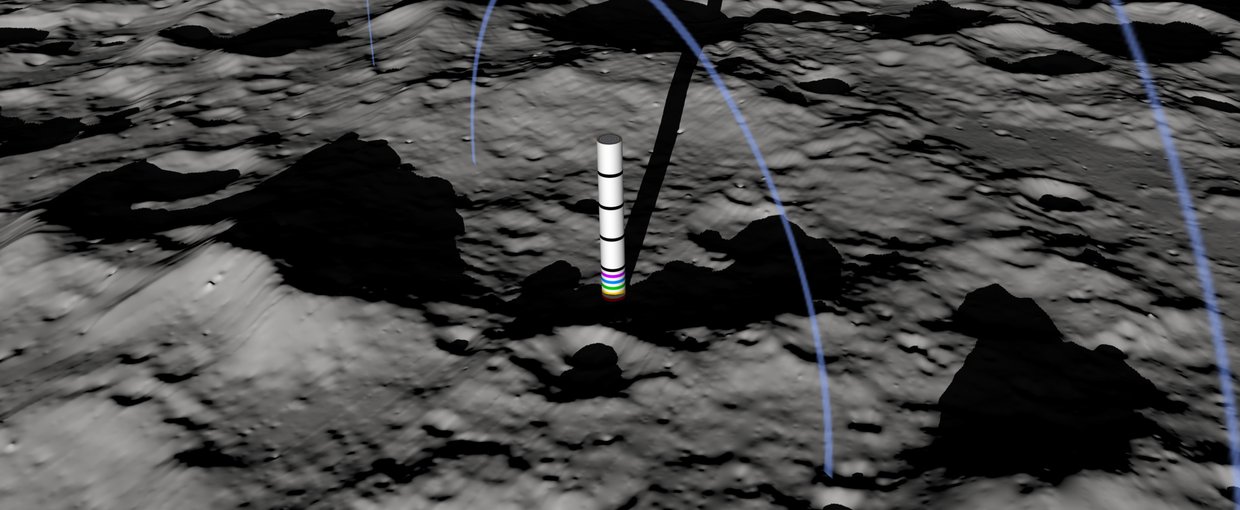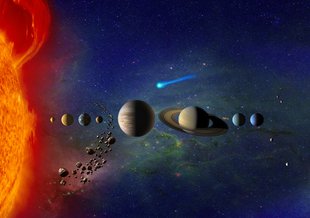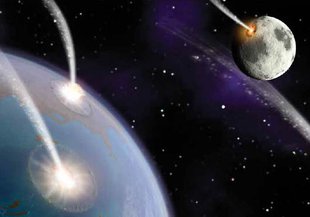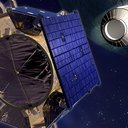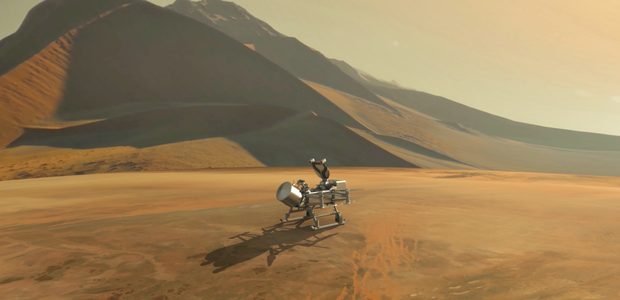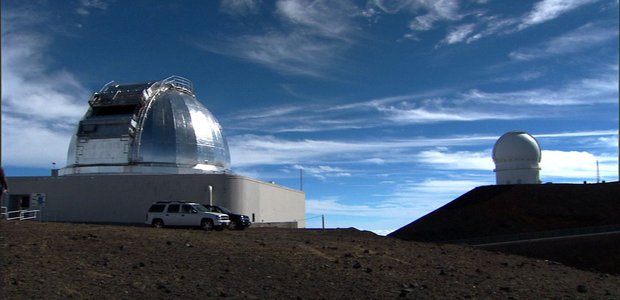- Launch Date June 17, 2009
- Arrival Date June 20, 2009
- End DateOctober 08, 2009
- Mission TypeOrbiter
- TargetThe Moon
Mission Overview
LCROSS set out to confirm the presence or absence of water ice in a permanently shadowed crater at the moon’s south pole.
On October 9, 2009, the vehicle’s spent Centaur upper stage impacted the crater Cabeus. Then the Shepherding Spacecraft descended through Centaur’s ejectate plume, collecting and relaying data before impacting the lunar surface six minutes later.
Relevance to Astrobiology
LCROSS successfully discovered water in permanently shadowed craters, and also found that the Moon is chemically active and has an active water cycle in lunar shadows.
Twenty percent of the material kicked up by the LCROSS impact was volatiles, and observations suggest that these materials originated from sources like comets and asteroids.
Understanding the processes and environments that determine where water ice is present on the Moon, how water was delivered to the moon, and its active water cycle can provide important information about how rocky bodies formed and evolved in the Solar System. This gives astrobiologists a view into the early Solar System and the potential conditions and inventory of materials available for the origin of life on the early Earth and other solar system bodies.
NASA Astrobiology Involvement
Astrobiologists supported by the Astrobiology program are involved in analyzing data returned by the LCROSS mission. This includes constructing models of the plume that was created when LCROSS impacted the lunar surface.
The Astrobiologists
NAINASA Ames Research Center Team member Co-I Sanford Davis has published models of the LCROSS impact and is analyzing flash data from the impact.
NAI Virtual Planetary Laboratory (VPL) at University of Washington Team Tyler Robinson, Victoria Meadows and William Sparks collaborated with LCROSS mission scientist Ennico to use VPL models to interpret observations of the Earth taken by LCROSS prior to impacting the lunar surface. In the process they discovered a calibration error in the LCROSS spectral data and were able to determine a correction.
The LCROSS data were also used to validate the VPL Earth model as a function of phase, showing that they were able to accurately predict the magnitude, spectral behavior and phase-dependence of glint from the Earth’s oceans as a potential sign of habitability for a distant world.

